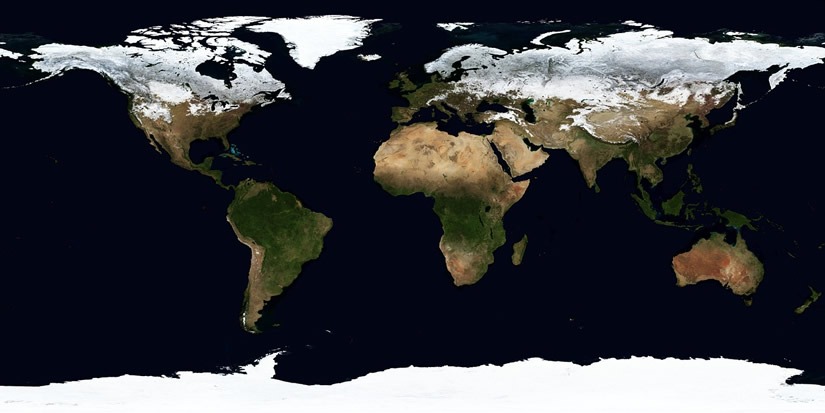By JustMarkets
At the end of Thursday, the Dow Jones Industrial Average (US30) was down 0.37%. The S&P500 Index (US500) was down 0.33%. The Nasdaq Technology Index (US100) was down 0.53%. Trump’s decision to impose 25% tariffs on imported cars, effective in April, has heightened fears of escalating trade tensions, especially with key trading partners such as the EU and Canada. Shares of automakers suffered, with General Motors down 7.3% and Ford down 3.9%, while Tesla rose 0.4%, benefiting from domestic production. Investors were also receptive to fresh economic data, with fourth-quarter GDP growth revised up slightly to 2.4% from 2.3%. Initial jobless claims matched expectations, but the trade deficit increased than expected, adding to market uncertainty.
Mexico’s central bank, Banxico, cut its key rate by 0.5% to 9.00% amid further declines in inflation and signs of continued economic weakness earlier this year. The release said several board representatives forecast a similar 50 bps rate cut at the May 9 meeting if disinflation persists, indicating a possible continuation of the easing cycle.
Equity markets in Europe were mostly down on Thursday. Germany’s DAX (DE40) fell by 0.70%, France’s CAC 40 (FR40) closed down 0.51%, Spain’s IBEX 35 (ES35) lost 0.07%, and the UK’s FTSE 100 (UK100) closed 0.27% yesterday. Frankfurt’s DAX index closed Thursday below 22.664, its lowest level since mid-March, and underperformed its peers as traders reacted to President Trump’s announcement to impose 25% tariffs on imports of all cars. Shares of auto companies led the decline, with Mercedes-Benz AG, Porsche AG, and BMW all down 2.6% and Volkswagen down 1.5%. European Commission President Ursula von der Leyen expressed disappointment but emphasized that the EU is committed to finding a diplomatic solution and protecting its economy.
Norway’s central bank, Norges Bank, kept its key rate at 4.5% for the tenth consecutive meeting. Policymakers noted that inflation has risen sharply and remains much higher than expected. They warned that cutting the discount rate too quickly could increase prices. Norway’s annual inflation accelerated to 3.6% in February 2025 from 2.3% in January, the highest since April 2024. Despite this, officials noted that their current forecast suggests a rate cut is likely later in 2025.
WTI crude prices rose to $69.90 a barrel on Thursday, extending gains of about 1% from the previous day, as traders priced in tightening oil supplies amid concerns about the impact of new US tariffs on the global economy. Market participants were focused on the risks associated with escalating trade tensions, especially after US President Donald Trump unveiled plans to impose 25% tariffs on imported cars and light trucks, with tariffs on auto parts set to take effect in May. In addition, the market was further supported by data showing a significant decline in US crude oil inventories by 3.3 million barrels last week.
US natural gas (XNG/USD) prices remain below $3.9 per bbl, near a four-week low, as record production and mild weather weigh on prices. Forecasts point to above-normal temperatures in the lower 48 states through April 9, which will likely reduce heating demand and contribute to higher inventories. Analysts forecast that March could see the first net increase in inventories since 2012.
Asian markets traded flat yesterday. Japan’s Nikkei 225 (JP225) fell by 0.60%, China’s FTSE China A50 (CHA50) added 0.58%, Hong Kong’s Hang Seng (HK50) rose by 0.41%, and Australia’s ASX 200 (AU200) was negative 0.38%.
On Friday, the Australian dollar slipped below $0.63, reversing the previous session’s gains as new US tariffs come into effect next week, adding to global trade tensions. Markets also focused on next week’s Reserve Bank of Australia decision, where the central bank is expected to keep interest rates unchanged at 4.1%. Current expectations indicate that rates will not be cut until at least July. Meanwhile, the prime minister announced a national election on May 3, kicking off a five-week campaign centered on tax cuts and reduced living expenses.
S&P 500 (US500) 5,693.31 −18.89 (−0.33%)
Dow Jones (US30) 42,299.70 −155.09 (−0.37%)
DAX (DE40) 22,678.74 −160.29 (−0.70%)
FTSE 100 (UK100) 8,666.12 −23.47 (−0.27%)
USD index 104.28 −0.27 (−0.26%)
News feed for: 2025.03.28
- Japan Tokyo Core CPI (m/m) at 01:30 (GMT+2);
- Germany GfK Consumer Confidence (m/m) at 09:00 (GMT+2);
- UK Retail Sales (m/m) at 09:00 (GMT+2);
- UK GDP (q/q) at 09:00 (GMT+2);
- Switzerland KOF Leading Indicators (m/m) at 10:00 (GMT+2);
- Germany Unemployment Rate (m/m) at 10:55 (GMT+2);
- Canada GDP (m/m) at 14:30 (GMT+2);
- US Core PCE Price Index (m/m) at 14:30 (GMT+2);
- US Michigan Consumer Sentiment (m/m) at 16:00 (GMT+2).
By JustMarkets
This article reflects a personal opinion and should not be interpreted as an investment advice, and/or offer, and/or a persistent request for carrying out financial transactions, and/or a guarantee, and/or a forecast of future events.







